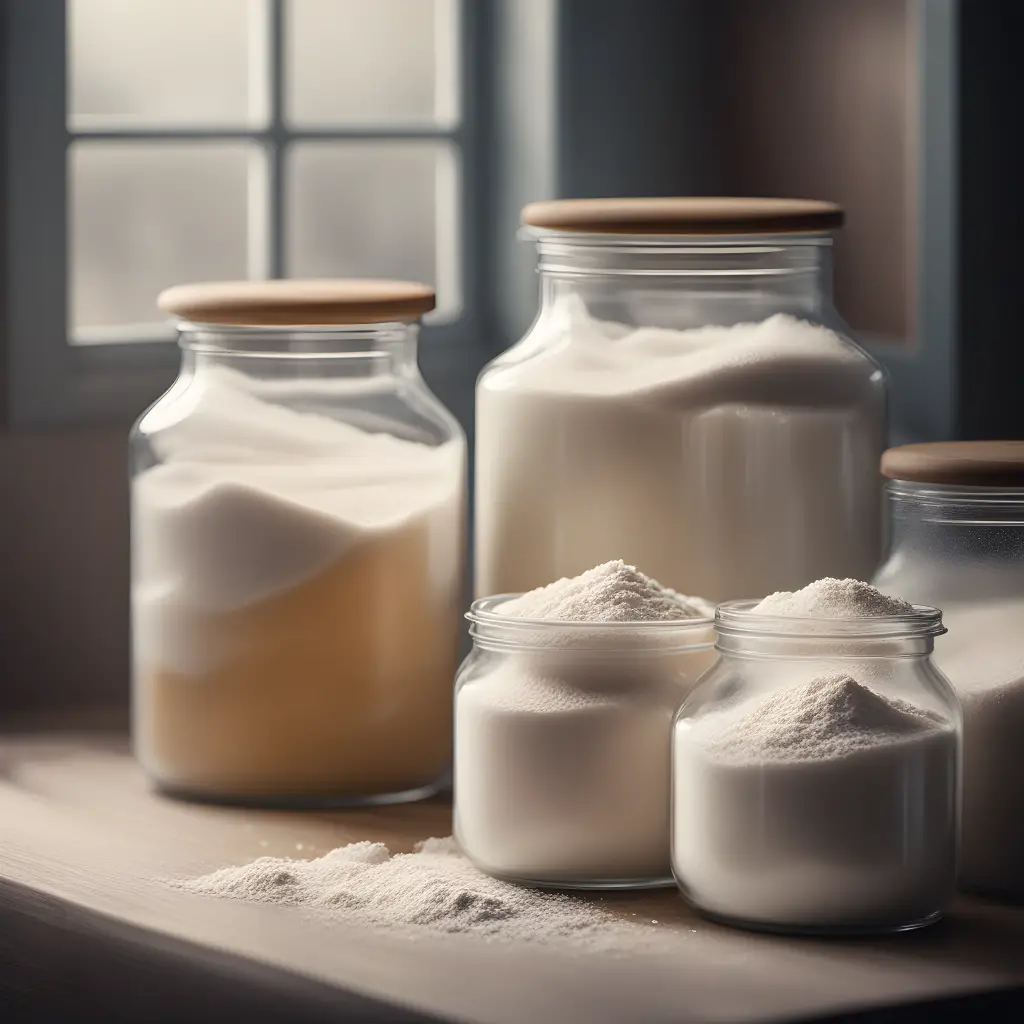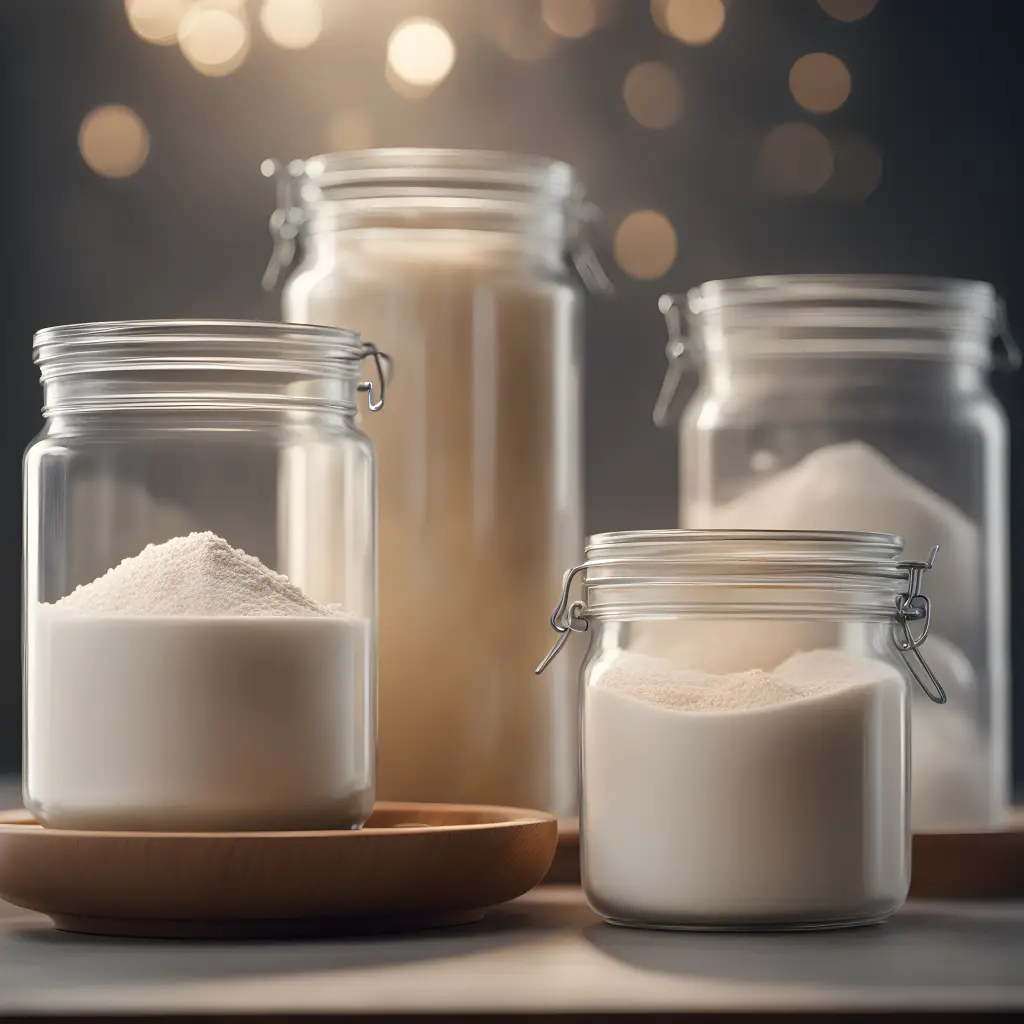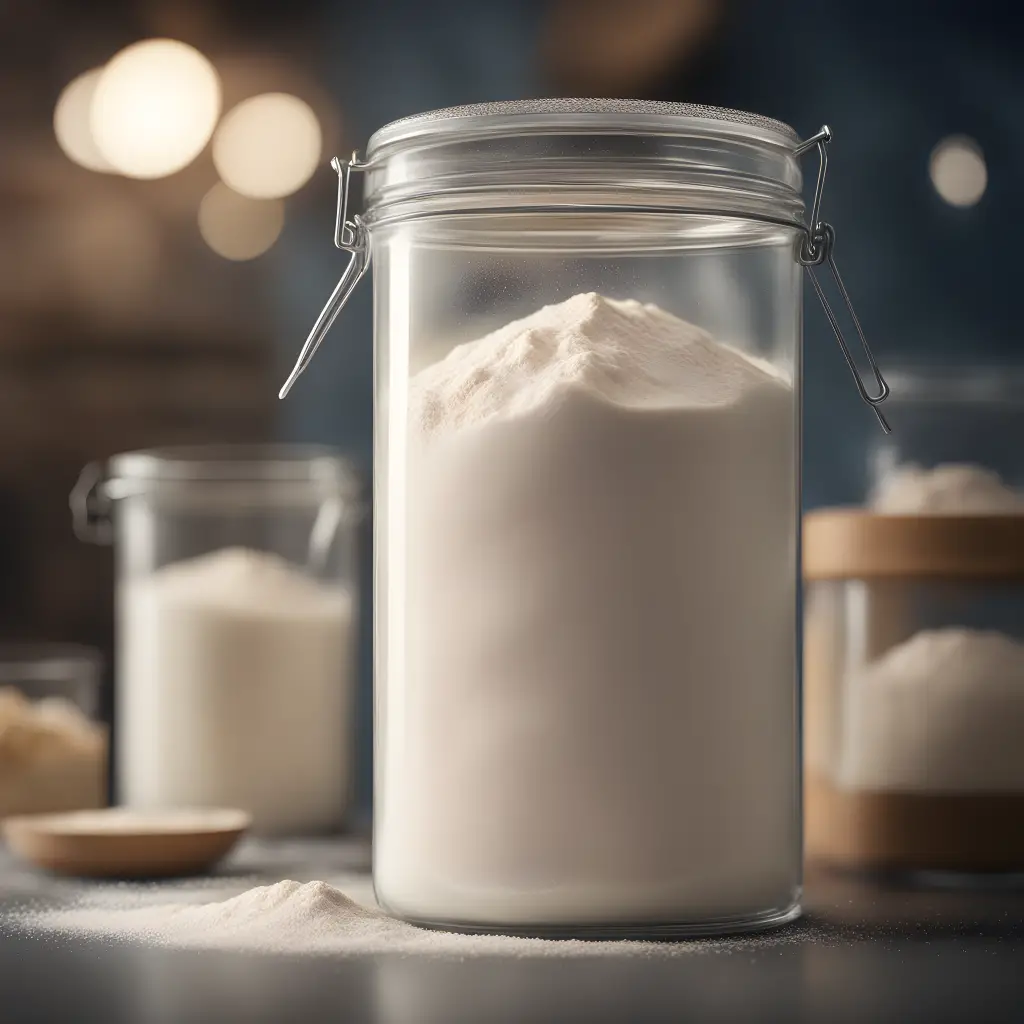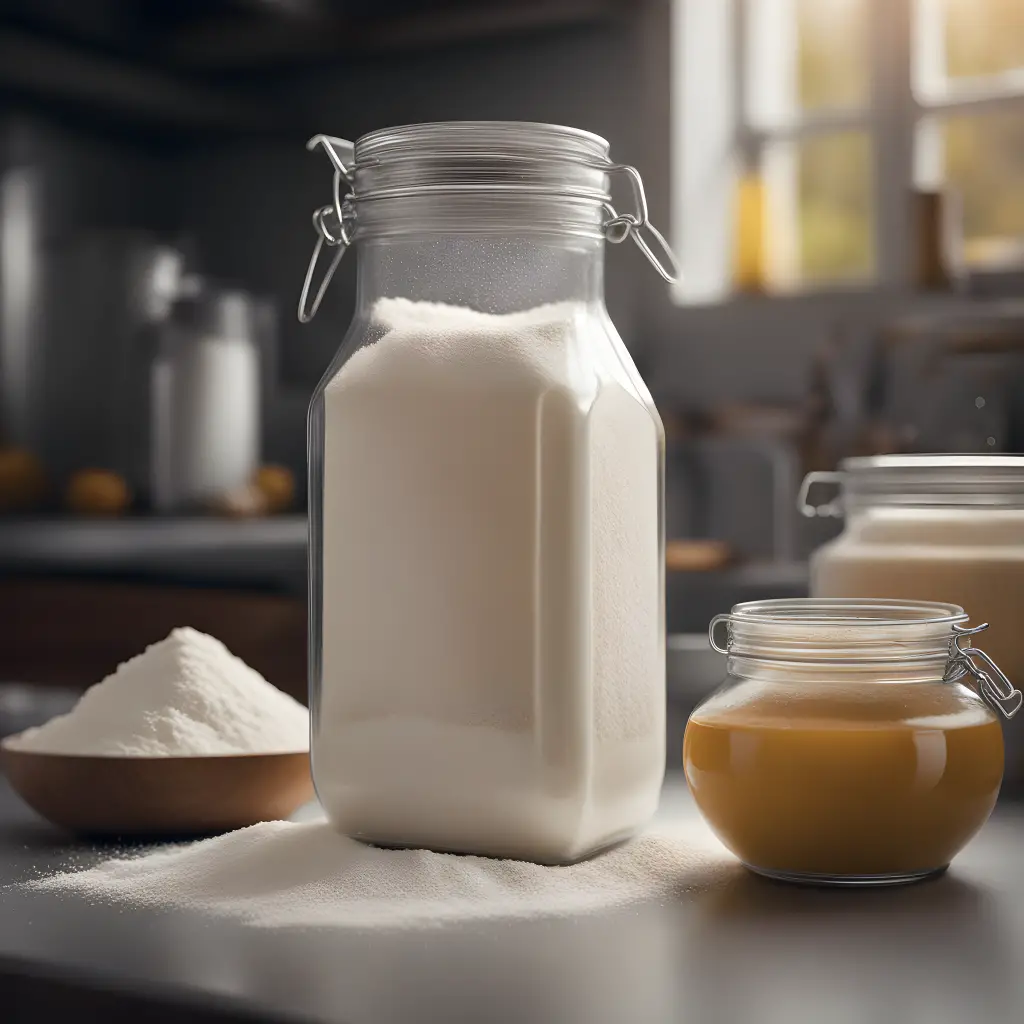
Is it Better to Store Flour in Glass or Plastic Containers? When it comes to preserving your pantry staples, one question that often crosses the minds of many home cooks and bakers is whether it’s better to store flour in glass or plastic containers. The choice between these two storage options can significantly impact the quality and longevity of your flour. This comprehensive guide will explore the pros and cons of glass and plastic containers for flour storage, providing you with all the essential information you need to make an informed decision on How to Store Flour in the Pantry.
The Importance of Proper Flour Storage
Before we delve into the specifics of glass vs. plastic containers, it’s crucial to understand why proper flour storage matters. Flour, especially all-purpose and whole wheat varieties, is a pantry staple susceptible to various factors that can degrade its quality over time. These factors include:
- Moisture: Flour can absorb moisture from the air, leading to clumping and spoilage.
- Heat: Exposure to high temperatures can cause flour to go rancid and develop an unpleasant taste.
- Light: Flour is sensitive to light, which can promote the breakdown of its nutrients.
- Pests: Flour can attract pantry pests like weevils and moths, leading to contamination.
To maintain the freshness and flavor of your flour, it’s essential to store it in a way that protects it from these factors.

Glass Containers for Flour Storage
Benefits of Glass Containers
Glass containers are a popular choice for storing flour due to several advantages:
- Airtight Seal: Glass containers often come with airtight seals, which effectively keep moisture and air out, preserving the quality of your flour.
- Visibility: Glass allows you to see the contents, making it easy to identify the type and quantity of flour at a glance.
- Chemically Inert: Glass is non-reactive, meaning it won’t absorb odors or flavors from the flour, keeping it tasting fresh.
- Durable: Quality glass containers can withstand temperature changes without cracking or warping.
Drawbacks of Glass Containers
However, glass containers also have their drawbacks:
- Fragility: Glass can break if mishandled, posing a risk of injury and creating a mess.
- Weight: Glass containers are heavier than their plastic counterparts, making handling and transportation more challenging.
Plastic Containers for Flour Storage

Benefits of Plastic Containers
Plastic containers are a practical choice for flour storage, offering several advantages:
- Lightweight: Plastic containers are lightweight and easy to handle, making them a convenient option.
- Durable: High-quality plastic containers are shatterproof, reducing the risk of breakage.
- Cost-Effective: Plastic containers are often more budget-friendly than glass options.
Drawbacks of Plastic Containers
On the flip side, plastic containers have some downsides:
- Odor Absorption: Plastic can absorb odors, which may transfer to your flour over time.
- Transparency: Unlike glass, plastic containers are not transparent, making it harder to see the contents.
Which Should You Choose?
Is it Better to Store Flour in Glass or Plastic Containers? The choice between glass and plastic containers for storing flour ultimately depends on your priorities and circumstances. Here are some considerations to help you decide:
- If you prioritize airtightness and protection from light and moisture, glass containers are an excellent choice.
- If you value affordability and durability, plastic containers may be more suitable.
- Consider your space and handling capabilities; plastic containers are lighter and less prone to breakage.
- To mitigate odor absorption in plastic containers, you can use airtight bags within the container to keep your flour fresh.
In conclusion, whether you opt for glass or plastic containers, proper storage is the key to preserving your flour’s freshness. Always ensure that your chosen container has a secure seal to prevent moisture and air from affecting your flour. Additionally, it’s a good practice to label your containers with the type of flour and date of purchase to keep track of freshness.
Top 10 Products for Flour Storage

To assist you further in your flour storage endeavors, here are the top 10 products related to flour storage available on the market:
- OXO Good Grips POP Container: Airtight and stackable, these containers are excellent for flour storage.
- Anchor Hocking Montana Glass Jar: A large glass jar with a metal lid for a classic look.
- Rubbermaid Brilliance Pantry Storage Containers: Clear plastic containers with airtight seals.
- Komax Biokips Flour and Sugar Storage Container: A BPA-free plastic container with a secure locking lid.
- Prepworks by Progressive Flour ProKeeper: Features a built-in leveling bar and airtight silicone seal.
- Lock & Lock Storage Bins: A versatile and budget-friendly option.
- Bormioli Rocco Glass Fido Jars: Italian-made glass jars with hinged lids.
- Vtopmart Airtight Food Storage Containers: Stackable plastic containers with labels and a pen.
- Tightpac America, Inc. Coffeevac: Vacuum-sealed container for ultimate freshness.
- Rubbermaid Commercial Products Plastic Space Saving Square Container: A space-saving, clear plastic container for bulk flour storage.
Each of these products has its unique features, so be sure to choose one that aligns with your specific flour storage needs.
Conclusion
In the debate over whether is it Better to Store Flour in Glass or Plastic Containers? There is no one-size-fits-all answer. Both options have their advantages and drawbacks, and your choice should be based on your preferences and circumstances. Whichever you choose, remember that proper flour storage is essential to maintain its freshness and quality over time. So, invest in high-quality containers, keep them airtight, and enjoy your pantry staples at their best. For more insightful articles on pantry organization and storage, be sure to check out Pantry Raider for all your culinary needs.
